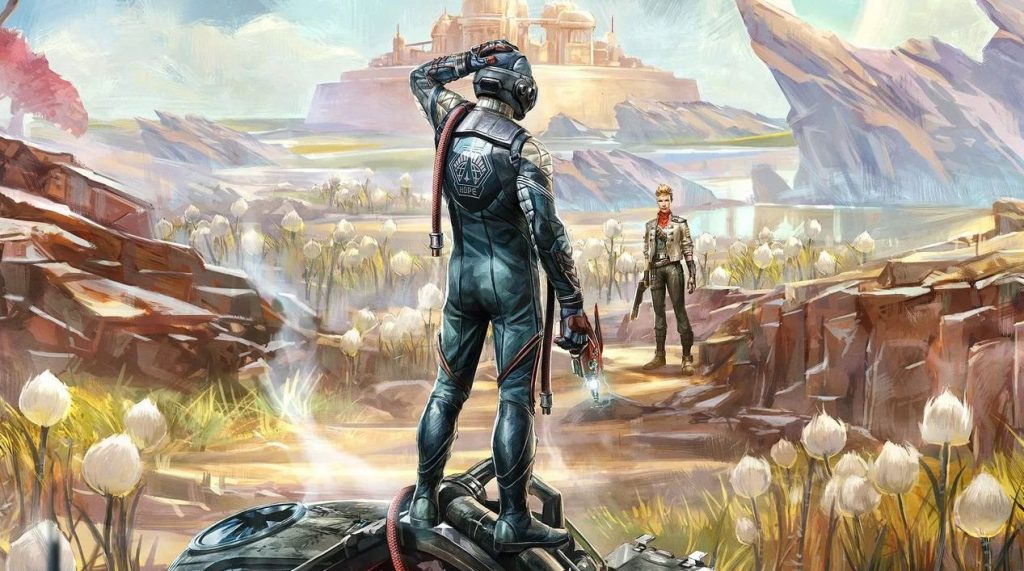Fallout fans have long been vocally unhappy with the turns the franchise has taken. Fallout 4 failed to please a large sub-section of the community, and Fallout 76 caused something akin to an internet riot. After years without a satisfying Fallout game, Obsidian Entertainment is swooping in to the rescue. The Outer Worlds isn’t technically a Fallout game, but if you squint a little bit you could be forgiven for assuming it is. Obsidian’s latest title delivers a burst of sweet nostalgia and an exciting new game world, all at the same time.
The Outer Worlds is a fantastic game; and, by all appearances, it was constructed specifically for Fallout fans and those who enjoyed Obsidian’s own Fallout: New Vegas. For all those that have been disappointed by the Fallout series and recent attempts at first-person RPG’s Obsidian has a present for you, and it is one of the best games of the year.
The Outer Worlds PS4 Review
About The Outer Worlds’ World…
The Outer Worlds gets the ball rolling, then gets out of its own way to let players explore its fascinating world. The setup for your adventure will feel like déjà vu to Fallout fans. A mysterious stranger is awakened after a long sleep and set free to explore a world that has dramatically changed during their slumber. However, instead of a nuclear war, this time it is corporate greed that has decimated the landscape.
When the player character is first awakened, they are reasonably confused about their surroundings. Having been put in suspended animation aboard the interstellar passenger ship, The Hope, they expected to wake up to a life spent taming the rugged space frontier.
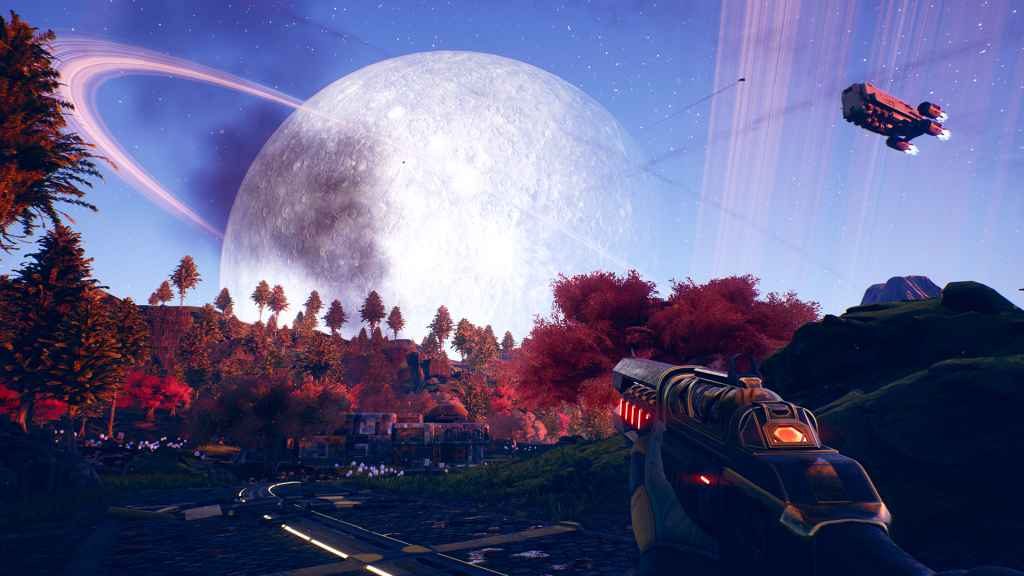
But The Hope was lost in space for sixty or seventy years; so by the time the player character is rescued and revived by a mad-scientist-type character, the planets in The Outer Worlds have been somewhat settled and tamed. But for settled worlds, these planets are more unsettling than they first seem.
Outposts are owned by various corporations – each greedier and more corrupt than the last. Residents are considered employees – but are really little more than expendable pieces of property – subject to brutal living conditions and uber-restrictive codes of conduct. As most settlements are now generations-old, residents have little life experience beyond rattling off slogans and jingles while being denied basic human rights.
Into these settlements wanders the player character, completely unbound to any entity and able to cause a ruckus anywhere and everywhere. I don’t want to spoil the game with any specific plot lines, but each area has its own fascinating self-contained storyline which still ties into the over-arching narrative. Players can approach these settlements any way they wish – from allowing the status quo to continue undisturbed to completely disrupting the way they function.
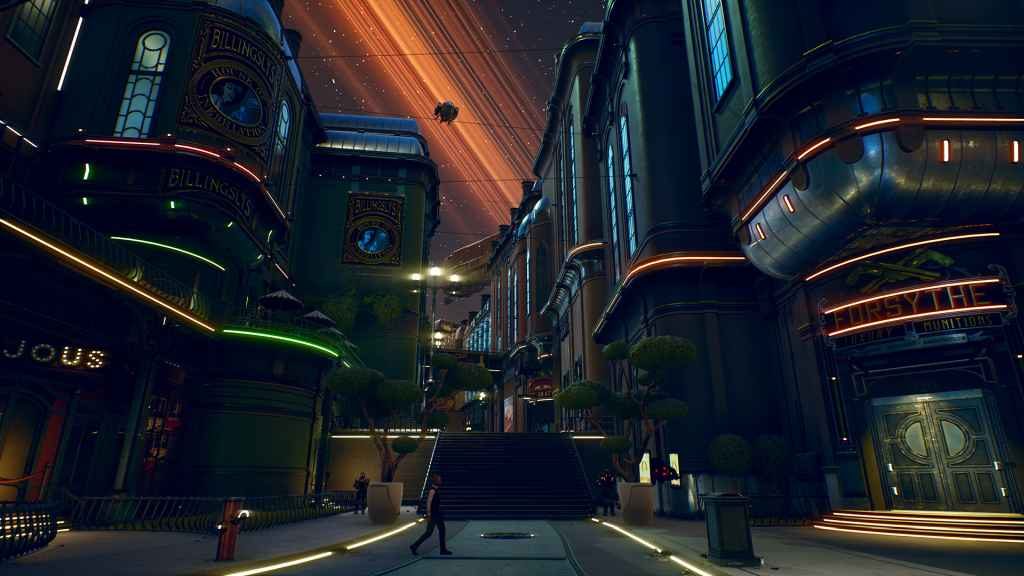
But beware of indulging your humanitarian instincts. It is best to think hard before “freeing” anyone from their bondage,” as the corporations offer the only real structure these people have ever known. Many don’t take kindly to your tearing them down.
The freedom to make or break these settlements (and individuals within them) is something that has been done in many games, but The Outer Worlds does it better than any I have ever seen. The game reacts to your choices in a manner that feels organic. When you see the results of an earlier decision reappear hours later, it is a fun surprise, but it never feels calculated or “gamey.”
With The Outer Worlds, Obsidian has managed to create a fresh, new universe while still maintaining the absurdist art-deco-retro-sci-fi world-building that fans love so much. To be clear, The Outer Worlds’ universe isn’t a Fallout knock-off, but it shares enough DNA that fans will immediately feel a sense of warm familiarity wash over them. The overall effect is wildly entertaining.
If It Isn’t An Open World, What Is It?
Each of the settlements (and many of the spaceships) are set up like a mini-open world. There is plenty of room surrounding base cities to wander around and discover fun creatures and explore abandoned settlements. Even though quests send you to each area’s high points, it is still entertaining to strike out on your own to go explore. Despite each area having its own map and the game not being one big open world, it feels open enough that you will likely not notice. The Outer Worlds does not suffer from a lack of content.
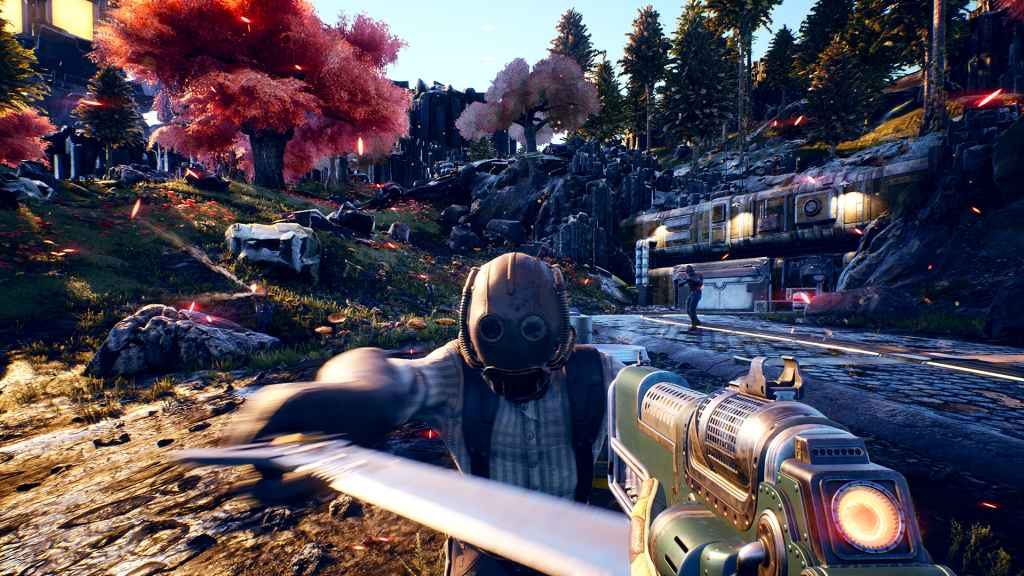
Travel between planets and outposts (there are sometimes more than one on each planet) is handled via a fast-travel system housed on the player’s personal spaceship, The Unreliable. You simply tell the ship where you want to go, then disembark at your new location. This manner of travel is convenient, and it works well within the game’s established universe.
You can expect to do a lot of bouncing between planets as a solar system full of settlements slowly opens up. Beginning quests keep you on the first planet while you get your feet wet, but before long you will be flying all over the system on various entertaining missions. I would typically scan my quest journal for multiple things I needed to accomplish at a location before setting out. There is a ton to do and see in each world.
So, About Those Fallout Parallels…
I have long been astounded that beyond Fallout and The Elder Scrolls, there aren’t many first-person RPGs on the market. It is clear that these games are difficult to make, but the genre is so beloved that it is striking that not more developers have had a try at it. That said, we now have a new franchise that can stand tall with those Bethesda stalwarts.
There is no question that The Outer Worlds is closely modeled after Fallout. How closely? Well…very closely. Companions stop you short and ask “Can we talk?” Crazy powerful weapons are found laying unobtrusively in side rooms of sprawling bureaucratic structures. Terminals deliver wickedly funny backstories for those that take the time to read them. Hilarious and ironic propaganda posters litter the landscape. The Outer Worlds feels, looks, and behaves like an awesome Fallout game.
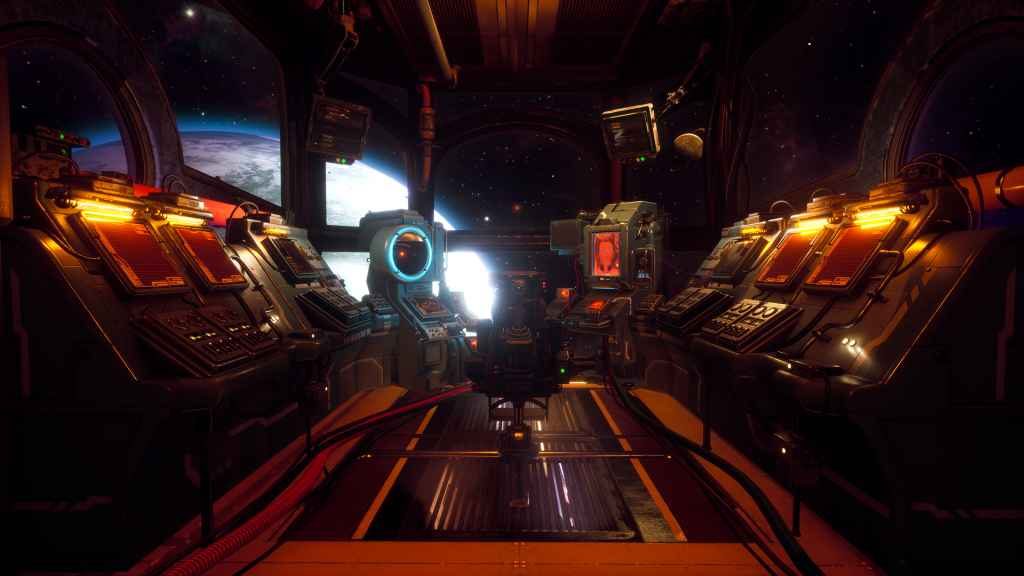
That said, Obsidian took the time to make some improvements to the formula. Instead of irritating everyone with a minigame, lockpicking is now handled with the press of a button. The perk system is clearly laid out, allowing for planning. Respecs are available right on your ship (for a price). Tutorials pop up contextually throughout the game – as you run into stuff, the game explains what it is and how it works.
But the biggest and most glorious improvement with The Outer Worlds is how polished it is. The bugs and glitches that plague the Fallout games are barely present here, if present at all. I’m sure there are some – games this size don’t get released without some issues eventually emerging. But in my playthrough, I never once experienced an issue. None. The closest thing I saw to a bug was one of my companions’ helmet loading in a little slow during a cutscene. If that’s the biggest technical issue I spotted, I would call The Outer Worlds a raging success.
The Outer Worlds Combat Is Fun And Rewarding
It is possible to resolve many quests without killing. With several different verbal options available, I often took the peaceful way out of conflicts when ever it was a option. Intimidation is my favorite way to push NPCs to do my bidding, but persuasion and outright lying are also effective ways to get what you want in The Outer Worlds
If you are the sort that needs to go all death/murder/kill on outposts, The Outer Worlds will allow you to do so. But even in the first outpost’s Megaton-style quandary, it is possible to completely screw over the settlement without killing everyone. I walked away from the first settlement I encountered both revered and feared, which was a deeply satisfying state to be in. The citizens were really pissed off and bewildered by my actions, but I still got great prices at local shops.
Regardless of how conscientious you are, there are still critters and marauders in The Outer Worlds, and you are going to have to take some out. The combat in The Outer Worlds feels rich and rewarding, making cleansing the frontier a pleasure.
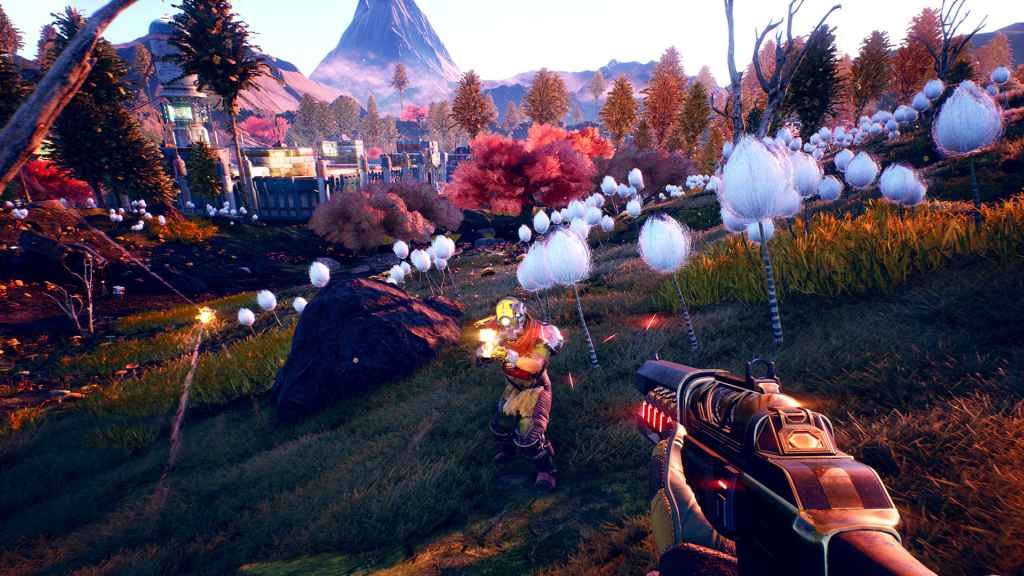
You can equip up to four weapons, and cycle through them with a press of the Triangle button. I typically kept a couple of ranged weapons, a handgun and a melee weapon on hand. Weapons can be modded in a number of ways to make them more powerful, including the ability to add elemental damage.
The weapons in The Outer Worlds handle well and are fun to use. Enemies aren’t particularly bright in The Outer Worlds, mostly either making a beeline for the player or hiding. This makes it fairly simple to mow them down with a flamethrower, but you might occasionally find yourself chasing someone over hill and dale, or getting surrounded when you accidentally trigger an entire town of marauders and space dogs. Killing enemies delivers a sizable burst of experience, which makes combat feel rewarding and worth engaging with.
The Outer Worlds’ version of VATS is known as Time Dilation. A click of the R1 button will slow combat to a crawl for a few seconds, allowing the player to get in a few good shots before the flow of time resumes and the enemy charges in. Though this ability isn’t super useful at the beginning of the game, adding a few perks to it boosts it later on. Still, it is just as exciting to ignore Time Dilation completely and play The Outer Worlds as a straight shooter. This is the best combat I’ve seen in a first person RPG.
You Should Play The Outer Worlds
There are so many great features in The Outer Worlds, more than I can cover in this review. The characters are well drawn and funny as hell, brought to life by some of the best voice acting I’ve heard in ages. The visuals – while not the most modern – still manage to deliver a sense of wonder and beauty. The absurdest dystopian humor is spot on, and delivers some great laughs on a regular basis.
As a longtime Fallout (and Elder Scrolls) fan, as well as a fan of Obsidian’s isometric RPGs, this game resonated with me like few others I’ve played. This is a game for fans like me, fans of the Fallout franchise, fans of first-person RPG’s, and if you count yourself among our number, The Outer Worlds is a must-play. If you weren’t previously a fan of the genre, or you were thinking about checking it out, I can think of no better introduction to this genre.
Obsidian set out to create a new universe and apply proven game concepts to it and they succeeded wildly.
https://www.youtube.com/watch?v=EPbrKXda6RI
The Outer Worlds releases for PS4, Xbox One, and PC on October 25, 2019.
Review copy kindly provided by publisher.
